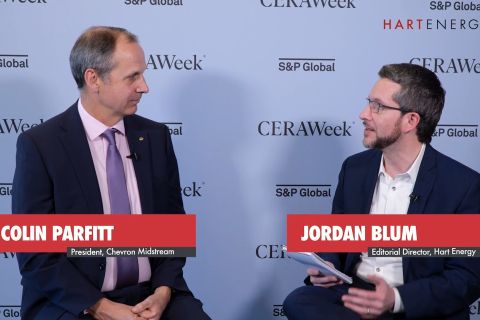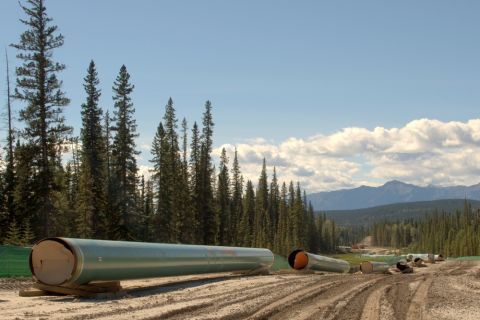
Students and faculty of the Colorado School of Mines presented findings from Phase 17 of the Reservoir Characterization Project, an industry-sponsored program that is focused on field data that will help both students and industry characterize reservoir performance and field development strategies.
The spring 2019 sponsors meeting of the Colorado School of Mines’ Reservoir Characterization Project (RCP) was held at the college in Golden, Colo., to present up-to-date results from U.S. and international advanced studies of unconventional and conventional oil and gas resources.
The field studies project seeks to advance geophysical research to explore new methods and technologies for better reservoir performance, analysis and resource optimization in U.S. and global geological settings.
Eagle Ford Project
The Eagle Ford team’s investigation over the past six months has been to measure the effectiveness of the reservoir stimulation beginning with the stimulation process through the life of the well using 4-D data sets to develop a strategic plan for better well placement, completion design and field development for the life of the field. For the project, the researchers installed permanent seismic monitoring to help understand reservoir behavior during hydraulic fracturing.
The project sponsors, Devon Energy Corp. and Penn Virginia Corp., provided the data used for the study, which is in the northeast portion of the play in the oil/gas transition area east of the San Marcos Arch. The project is due to wrap up in 2019.
There are 40 surface seismic sensors set up and 40 multicomponent vertical seismic profile (VSP) surveys. They are recording seismic data that occurred over a four-month period during stimulation from two wells (well A with fiber optic cable and well B with three-component geophones) in the area. The seismic data can be tied to the well logs and ongoing completion production information. The team also had a 3-D surface seismic source array and that was recorded into the fiber optic array in well A.
Student Ufuk Durmus presented findings from his rock properties study which looks to build a rock physics model for unconventional resource development and develop a homogeneous model that can be used in other studies. His study will also analyze seismic properties using the rock physics model. The model includes estimating bulk and shear modulus, kerogen and calculating the effective elastic stiffness coefficient.
The study area for student Adam Tuppen is how to work around issues of data quality during processing, to examine the value of multi-component data sets add for seismic conversion and how can inversion results be best used to locate the “sweet spot.” The key takeaway, according to Tuppen, is that the key spatial amplitude issues can be improved with amplitude regularization using a window outside of the reservoir.
A microseismic study described by student Dwaipayan Chakraborty is looking at the application of real-time data for characterizing fractures in Eagle Ford. For the study, Chakraborty said that surface microseismic data was required before and after fracturing. The researchers noted that there were changes between the two sets of microseismic data groups that occurred at regular intervals before and after fracturing, leading them to wonder if there are some events that are simply not being recorded.
One of the areas of interest was to investigate if there were false triggers, with events in close proximity that might show up as possible multiple events. Student Whitney Shelton covered VSP layouts surface monitoring and a 1-D velocity model that can be used in surface seismic and microseismic processing. This part of the study will analyze the time lapse changes from hydraulic fracturing and see if there are changes that correspond to the microseismic events and compare the geophone and distributed acoustic sensing (DAS) responses and examine the data quality.
A reservoir modeling study is also under way to predict future production, forecast enhanced oil recovery (EOR) and optimized well spacing in the rich gas/oil window of the play. The team has applied rock physics modeling to understand the impact of reservoir heterogeneity on elastic properties.
Future work would be to history-match data to further validate the geological model, apply flow physics and completion parameters to the decline curve analysis. They will also complete the dynamic modeling for the landing zone, well spacing and well spacing optimization to complete an integrated understanding of the reservoir.
Permian Basin
One of the goals for the Permian Basin project is to understand DAS in the reservoir and with stimulation characterization. The research analyzes an interstage DAS/VSP dataset. The near-term project goals are to analyze velocity changes and scattering effects caused by each of the 78 stages of hydraulic fracturing and to use modeling to assess the possible mechanisms that could be causing the timelapse changes. The ultimate goals are to find hydraulic fracture height and design-optimized DAS acquisition geometries for future use.
Data for this Wolfcamp-Midland Basin study was provided by Apache Corp. who conducted a VSP survey before fracturing and then after each of the 78 stages of fracturing on a well using DAS technology. For the test, the cable was cemented outside the casing along the entire length of the well—this allowed them to measure velocities during stimulation.
Vaca Muerta, Argentina
The final results of the team study Argentina’s Vaca Muerta shale system were presented by student Pablo Benitez. The research seeks to understand the factors controlling reservoir production with geology, geophysics, geomechanics and engineering.
The team is studying the results of an analysis of velocity variations with wide-azimuth AVZ to perform a natural fracture and stress analysis to locate ideal locations for new wells in the block.
The study was performed in the eastern section of the Neuquen Basin in the Neuquen Embayment in an overpressured gas accumulation in the Jurassic tight-sands of the Lajas and Punta Rosada.
The team used a wide-azimuth seismic data with a 2-D (noise) filter. There were three vertical wells drilled with image logs and core data and fracture testing data. For two of the wells, they have surface vertical microseismic data and core data. The team also had recent 3-D and 3-C seismic data.
Based on the derived fracture analysis, the lower section of the formation (Vaca Muerta or Cochina) would provide some of the best landing zones for horizontal drilling, fracture stimulation and production.
Student Patrick Corwin discussed findings of the post-stack seismic inversion testing that was produced after the multi-component seismic survey, which was performed at two wells in a nearby area in the basin.
According to Corwin, they found that the legacy and the wide azimuth seismic data are much more similar to each other than they are to the multi-component seismic data. However, the results from the multi-component seismic set were less than ideal for the inversion work mostly due to challenges, such as geophones that failed (low batteries) and very muddy surface conditions for the vibroseis trucks. He also noted that the acquisition and processed results were less than ideal for inversion but the inversion results correlated better with the well logs that with the legacy seismic data.
Kuwait
A fracture characterization study in the country looks to develop a better understanding of the sub-surface layers so that the project sponsor, Kuwait Oil Co., can improve development of the Marrat formation in the northern part of the country in Raudhatain Field.
In the research area, there are 14 wells with well logs for the Najmah formation with wide-azimuth seismic survey data. However, there are no core samples, which would help define the minerals of the zones for rock refraction—currently the team is estimating them from a model.
Jubarte Field, Offshore Brazil
The offshore Brazil project looks to characterize and monitor the reservoir by integrating geology, geophysics and petroleum engineering. Jubarte was the first deepwater, pre-salt reservoir field in the Campos Basin and it was discovered in 2001.
The project is a conventional post-salt turbiditic sandstone reservoir with good porosity conditions and saturated by heavy oil. There is currently a permanent monitoring system in place in the field. The team also has production data, rock physics models and time-shift cubes.
The team is working with 4-C and 4-D seismic data, which was shot about one year apart and they have post-migration data and stacks. For the new part of the characterization project, they will be reprocessing the data sets. The other topics they are trying to address are data for imaging processes and compressive sensing as well as to extend the ‘illumination area’ of the seismic data.
Norwegian North Sea
A new project for the RCP 2019 program is in the Lundin AB-operated Edvard Grieg oil field in the North Sea. The team seeks to better characterize the reservoir and the overburden and how it responds to production and water injection to facilitate future development. They are working with 4-D multicomponent data from 2016 and 2018 and they have begun receiving preliminary data and will be perform pre-stack simultaneous PP-PS inversion and reservoir and overburden PP-PS time shift analysis.
One of the challenges, according to student Sima Daneshvar, is that the geology is depositionally complex, with a chalk that overlies the reservoir that creates a wide array of seismic shifts between the formations. The high-velocity chalk that overlies the reservoir goes from 2,300 meters per second in the shale to 4,200 meters per second in the chalk and limits the offset range for velocity analysis and attenuating half of the energy and the frequencies in the reservoir. There are also shallow features above the reservoir including cemented sands and some channelized features.
Recommended Reading
Asia Spot LNG at 3-month Peak on Steady Demand, Supply Disruption
2024-04-12 - Heating demand in Europe and production disruption at the Freeport LNG terminal in the U.S. pushed up prices, said Samuel Good, head of LNG pricing at commodity pricing agency Argus.
Exclusive: Chevron Balancing Low Carbon Intensity, Global Oil, Gas Needs
2024-03-28 - Colin Parfitt, president of midstream at Chevron, discusses how the company continues to grow its traditional oil and gas business while focusing on growing its new energies production, in this Hart Energy Exclusive interview.
Imperial Expects TMX to Tighten Differentials, Raise Heavy Crude Prices
2024-02-06 - Imperial Oil expects the completion of the Trans Mountain Pipeline expansion to tighten WCS and WTI light and heavy oil differentials and boost its access to more lucrative markets in 2024.
Midstream Builds in a Bearish Market
2024-03-11 - Midstream companies are sticking to long term plans for an expanded customer base, despite low gas prices, high storage levels and an uncertain political LNG future.
Exclusive: Renewables Won't Promise Affordable Security without NatGas
2024-03-25 - Greg Ebel, president and CEO of midstream company Enbridge, says renewables needs backing from natural gas to create a "nice foundation" for affordable and sustainable industrial growth, in this Hart Energy Exclusive interview.




